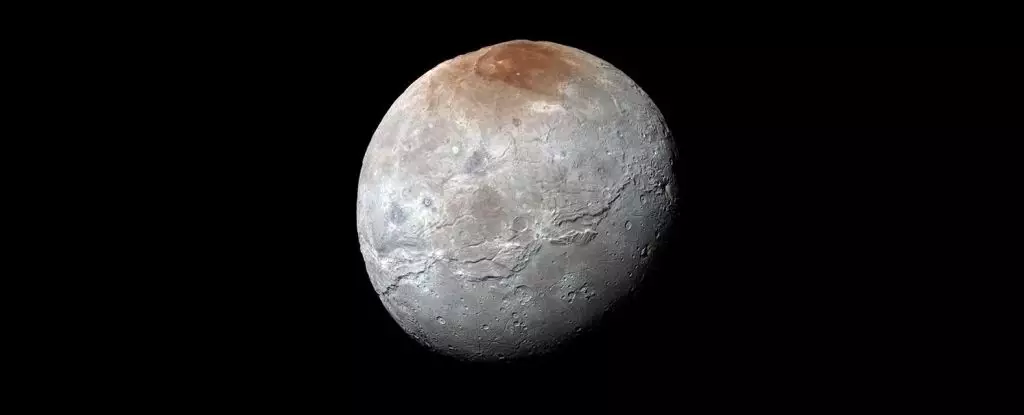In the vast expanse of our Solar System, Pluto and its moon Charon have long intrigued astronomers and planetary scientists. Traditionally viewed through the lens of classic planetary formation theories, recent research introduces a novel perspective that reconsiders the origins of this celestial pair. The concept of a “kiss and capture” scenario presents an alternative to the prevailing models that likened Charon’s formation to the Giant Impact Hypothesis used to explain the relationship between Earth and its moon. This new understanding challenges preconceived notions, inviting a reevaluation of the mechanisms behind celestial formations and interactions.
Past theories primarily grouped planetary collisions into two distinct categories: those that end in a “hit and run,” where bodies pass each other with minimal interaction, and those characterized by “graze and merge” dynamics, where a full fusion occurs. However, the recent findings by a team of researchers led by planetary scientist Adeene Denton from the University of Arizona pivot to an entirely distinct interaction mode. Here, Pluto and Charon are theorized to have collided briefly, entered a temporary phase of cohesion in which they became a contact binary, and subsequently separated, all while maintaining their gravitational connection. This “kiss and capture” scenario unlocks new interpretations about the dynamic interplay between these celestial bodies.
The distinctions between the configurations of Pluto and Charon when compared to Earth and its moon are critical. The environment surrounding Pluto—far colder and composed of rock and ice—impacts the behavior of these bodies upon collision. Where warmer bodies like Earth and the Moon exhibit fluid-like characteristics during significant impacts, the icy surfaces of Pluto and Charon resist deformation. Consequently, rather than disintegrating into debris from a colossal impact, these bodies likely underwent a much less destructive interaction, preserving much of their primordial composition.
This revelation invites deeper reflection on the categorization of celestial bodies based around the Solar System’s frost line. Understanding how materials behave under varying thermal conditions aids in forming a more comprehensive picture of planetary formation across different environments. Without adjustments to these parameters, models risk oversimplifying complex cosmic events and limit our interpretations of how such interactions influence celestial evolution.
The orbital configuration of Pluto and Charon is a testament to their unusual formation history. The unique alignment of their axes raises intriguing questions about their initial states post-collision. The simulations conducted by Denton’s team effectively replicated the observed orbital properties of the duo, implying their current configuration is a direct lineage of their early interactions. The precision of these models suggests a profound connection between the formation events of these bodies and their long-term evolutionary trajectories.
As Charon orbits Pluto, their gravitational relationship presents a vibrant dance reminiscent of other celestial pairings. This observable stability not only provides insights into their past interactions but also makes a case for the moniker of “contact binary,” reinforcing notions of shared histories and common origins. It becomes clear that these bodies have evolved alongside one another, with their identities shaped by the complexities of their early moments.
One of the most important takeaways from this new study is the enriching knowledge it provides regarding the formation of celestial bodies and their respective companions. It compels us to expand our investigative frameworks within the field of planetary science, ensuring that we do not overlook essential physical attributes that may play a crucial role in the evolution of planetary systems. The findings not only illuminate the enigmas surrounding Pluto and Charon but also ripple outwards, encouraging a fresh examination of planetary formation across the cosmos.
Lastly, this research lays the groundwork for understanding how intricate relationships like that of Pluto and Charon can significantly influence geological evolution. By reconsidering the initial configurations formed from past collisions, scientists can better explore trajectories of change over eons.
The affectionate tale of Pluto and Charon underscores the capacity for scientific discovery to challenge our understanding of the universe. As the “kiss and capture” scenario gains traction, it fosters a holistic approach to comprehending celestial dynamics and invites continual exploration. Future studies may further refine our grasp of the origins of not only these two celestial bodies but others throughout the universe, guiding ongoing inquiries into the genesis of planetary systems. The relationship of Pluto and Charon is indeed a rich tapestry opened up for exploration, arresting us into pondering the myriad ways that cosmic entities interact and evolve.


Leave a Reply